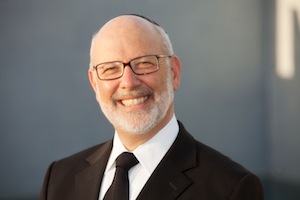Devarim 24:5
Feeling and transmitting feeling
It is quite possible that animals, like humans, can experience some form of emotion. What is uniquely human though, is the capacity to transmit emotions to others. Humans can make others feel happy, sad, proud. That is the essence of art and music: the transmission of human emotion from artist to observer or listener. We can enthuse and inspire. We can uplift and move others to action. We can entertain and delight.
Not only can humans transmit emotions, but often they derive more fulfillment from transmitting emotion, than from the emotion itself. In the intimate relationship of man and woman, each loving partner derives more happiness from the pleasure they bring to the other than from their own pleasure. This, the essence of love, is perhaps even more so in the male role than in the female role.
Make happy or be happy?
A man’s capacity both to rejoice with his wife and to bring joy to his wife is implied in the Parsha.
A new husband’s obligation to rejoice with his wife for the first year of their marriage is stated in the Parsha (Devarim 24:5) in the Hiph’il (causative) form, “vesimach” rather than in the normal Kal form, “vesamach”. The meaning then is not that he should rejoice with his wife, but rather that he should bring joy to his wife. The word “et” before “ishto” (his wife) also indicates that “his wife” is the object of the phrase. Despite this Hiph’il form, TargumYonatan translates “et” as “with” rendering the whole phrase as “and he shall rejoice with his wife.” Rashi criticizes that translation and supports Unkelos’s “and he shall bring joy to his wife.”
Rashi and Unkelos are clearly correct grammatically, but the trop (musical notation and punctuation marks) supports Yonatan. There is a definite pause after “he shall rejoice” before “(with) his wife”, implying that “his wife” is not the object of that sentence and that the requirement is that the two shall rejoice together. Yonatan sees them equally active in their joy whereas Rashi and Unkelos see the male as the initiator of the pleasure.
The two meanings, one implied by the grammar and one by the trop, are intended to teach the inextricable connection between a man’s own enjoyment of his relationship, and the joy he brings to his wife. In the physical relationship between man women, his pleasure is significantly heightened by the knowledge that he has brought ecstatic joy to his wife. Many women even feel the need to “fake” that joy so as not to deprive their husbands of their own pleasure.
The Torah teaches that rejoicing with your wife requires that you bring pleasure to your wife. In the male-female relationship, pleasure is not about taking, it is about giving. Giving without holding back, giving with abundant generosity, giving with abandon. The man who is self-conscious and inhibited in his giving, deprives not only his wife but also himself, of deep joy and pleasure.
Beyond the physical
Although the Ba’al Haturim assumes the joy referred to in this verse to be primarily sexual, since it applies to every day of that first year, we may safely conclude that it goes beyond the sexual. This principle transcends the physical relationship between man and wife and includes the emotional and spiritual relationship too. In every aspect of male-female interface the joy of the man is a function of the abundance and generosity with which he gives. The more he holds back, the less he has. The more he gives forth, the more he gets.
Even the three kinyanim (methods of acquisition) used to acquire the rights to a wife indicate that multi-faceted giving. He acquires the rights to marriage by means of a financial investment (Kesef), the investment of communicative generosity (Shtar), and the investment of physical intimacy (Biah). These are not just one-off requirements. They are fundamental to an ongoing healthy relationship between husband and wife. So long as the husband is materially, verbally and physically generous with his wife, they have a relationship that can weather almost any storm.
The wife has a role in this too. By the visible joy with which she actively receives his generosity and reciprocates it with love, she stimulates even greater potency in his acts of giving and heightens his joy even more.
In marriage we learn with acute feedback the value of our giving. When he holds back, she is kenegdo (in opposition to him); and when he is giving she is his greatest conceivable eizer (companion). Last week I remarked how business is a university for the growth of the human character and spirit. Marriage is the other major university of character growth. Using instant bio-feedback, it teaches us the value of abundant, unconditional generosity.








